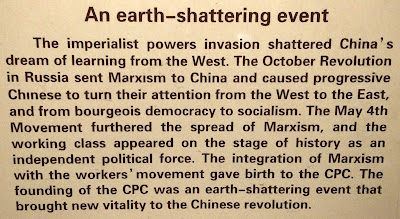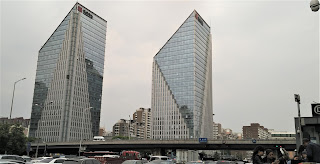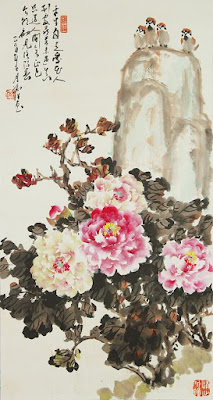China is big. Beijing is big. Everything seems to be big in this country. One has to crane one’s neck to see the temples, towers, palaces and the modern buildings. Our legs ached as we walked through the National Museum of China, the Forbidden City or through the busy Central Business District of Beijing.
Coming from India, we were struck by almost every feature of this country. We were awed by the length, breadth and orderliness of their roads, the pavements, the efficiency and affordability of their public transport system, the toilets, the maintenance and cleanliness of their public spaces and a general civic order followed by the people themselves.
In May 2016, we lived in Beijing for 25 days. Lately, our travel formula has been to live in one city in a new country for a month. This annual project generally gets implemented in May as it is a month of holidays both for my courts as well as our daughter Hannah's school.
Beijing has so much to offer from the past and the present, having been the capital city of the Ming and Qing dynasties as well as the People’s Republic of China. If the museums and temples are one set in the itinerary, equally awe-inspiring is the imposing presence of the vibrant and bustling modern China visible in every nook and corner of the city.

The photo essay is loosely structured. It meanders from roads, palaces, museums to public conveniences to the culture of parks, food and friendships. Please note that the text comes first followed by the image.
There are high rises and high rises. Some are regular, while some are spectacular.
Beijing is a city that is constantly battling pollution. We were told that the Chinese government has strict laws to control pollution. It is mandatory for every car to go through pollution checks once a year. If it fails the test, the car has to be junked.
Within the city, we traveled mostly by the Subway. The Subway has signposts in both Chinese and English, unlike the buses which had their maps and sign boards only in Chinese. Slated to be the largest in the world by 2020, the Beijing Metro is also the newest and the cheapest in the world. It has 16 lines and they are adding more. It is supposed to have been built even under their major heritage sites.
We were often confused and intimidated by the number of exits in each of the subway stations. We wondered at the expansiveness of the city since the crowd from each station emerges out into at least 5 to 6 exits.
There are strict security checks manning all these exits. The Subway also has their staff manning the platforms. On one occasion, Hannah had walked to the edge of the platform. Even before I shouted I heard the security woman shout to keep away.
Because of language problem, we couldn't experience the bus services. In the buses, we were anxious about missing our stop or going in the wrong direction.
There are strict security checks manning all these exits. The Subway also has their staff manning the platforms. On one occasion, Hannah had walked to the edge of the platform. Even before I shouted I heard the security woman shout to keep away.
Because of language problem, we couldn't experience the bus services. In the buses, we were anxious about missing our stop or going in the wrong direction.
There are strict security checks manning all these exits. The Subway also has their staff manning the platforms. On one occasion, Hannah had walked to the edge of the platform. Even before I shouted I heard the security woman shout to keep away.
Forbidden City: the maze of palaces and courtyards.
The most touristy destination of Beijing next only to the Great Wall of China. The smaller courtyards in this huge palace complex were exquisite, and so were the special exhibitions that were organised in them.
In one of the inner courtyards, an exhibition featured Peonies, the most sought after flower of the Chinese empire. You could see clusters of peonies paintings, carved in jade and glass,stitched on shoes, robes and curtains.
Like in any country, the stories of palaces are entertaining. Add to this the English translations of the intrigue and the machinations of kings, queens, and their courtiers. See below the description of a cypress tree in the Confucius Temple.

The Confucius Temple is located on a piece of land that is considered to be an ancient center of education. It has large gardens with benches under the old cypress trees. A quiet and serene atmosphere.
The 7.6 metres Bell in the Bell and Drum Tower. The bell is the largest and heaviest in China. This tower is in the Hutong quarter of Beijing. A steep tower with innumerable stone stairs. Certainly not for the weak-knees. We gasped and panted as we climbed the stairs.
You can see the entire grey hutong quarter from this tower.
The man is the chief drummer of the Bell and Drum Tower. Four times during the day, six drummers dressed in white and red beat the drums. We were lucky to experience this grand show.
  |
The Beijing Zoo. The most beautiful animal in this zoo is the panda bear. One is so familiar with stuffed panda toys that it was a pleasure to see it in real. A must watch scene is the intense concentration with which the panda peels and eats the bamboo.
The zoo has water bodies which include lakes and streams that simulate the forest. There is also an aquarium adjacent to the zoo. Unfortunately we missed it.
The Yongegong Lama Temple, a prominent Buddhist temple in Beijing attracts thousand of devotees.


The Maitreya statue housed in the Yongegong Lama Temple, rising to a height of 18 meters, is made of a single block of sandalwood.
The National Museum of China is located adjacent to the Tiananmen Square and diagonally opposite to the Palace Complex called the Forbidden City. Mao’s mausoleum is located close by and so is the Hall of Heroes.
In the museum, The Road of Rejuvenation exhibition is a proud and confident rendering of Chinese modern history. The ultimate story of rebuilding the nation - from the ravages of imperial occupation, famine, disease and poverty to what China is today, the vibrant and prospering economy. The exhibits are curated with minute attention, pride and respect.
When it comes to big, surely the Communist Party of China (CPC) is the biggest. An earth shattering event. The CPC will be celebrating its 100th anniversary in 2021.
One of the exhibits in the National Museum.
 |  |
Notice the sheer charisma of the man behind building of this extraordinary nation.
 |
 |

There are several museums in Beijing. One of the museums that caught our attention was the Chinese Museum of Women and Children. It was housed in a huge colourful building.

 Ever noticed a play area in a museum? Definitely, our first time.
Ever noticed a play area in a museum? Definitely, our first time.While one floor of the museum displays local dresses worn by women of China, two other floors were devoted to the participation of women in the Communist Party of China and their role in building of modern China. On display were rare pictures of women artists, bare-foot doctors, women soldiers and technicians, news readers and others.
The museum also gave statistics about the developments undertaken by the Chinese State to reduce maternal mortality, infant mortality and increase women’s participation in education and skilled employment.
The picture below is our favorite from this museum. Read the caption in the picture.






























































